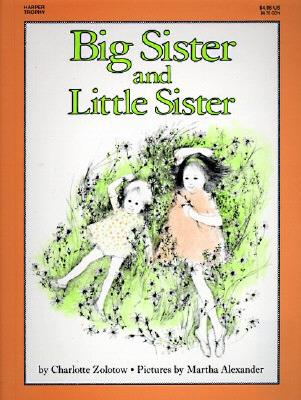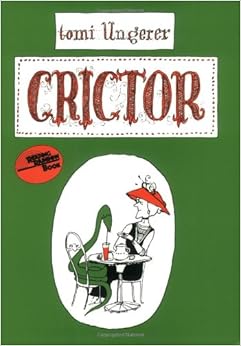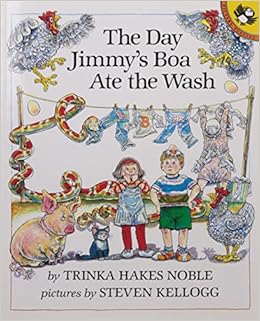The first thing I do when I go "booksaling" is find the Classics/Literature section, elbowing and hip-checking pesky book retailers out of the way. But sometimes all this combat goes for naught; all the used book sales have are twelve different paperback editions of Tom Sawyer, editions that cannot take the place of my own hardcover, gilt-edged Readers Digest copy. Even then, though, book sales that lack adult literature aren't necessarily a bust. I always make a point to flip through the children's books.
I've read a lot of articles, in books, magazines, as well as online, about how picture books are great to read to children. It teaches them literacy, it builds a parent/child bond, creates a mental connection between the conceptual words and the physical images of the illustration. To sum up: picture books are good for kids.
But I would expand that argument, in my own unscientific opinion, to say picture books are good for adults, too. Many adults I talk to say they don't like reading. "I'm not a reader," they say, shrugging their shoulders, as if there was some genetic predisposition for reading and not reading, akin to lactose intolerance.
My response is always the same: "That just means you haven't found the right book yet." There are books on millions, probably billions of topics. I think most adults don't go to libraries or frequent bookstores often enough to have any concept of the volume or variety of reading material that's available to them. To use a metaphor from another medium, it's like if you turned on the TV and it happened to be on the Weather Channel, and you immediately said "I don't like watching TV" based on that single channel, without changing to see what other programs were on.
By the way, if I may rant a bit, "I don't like to read" is an invalid argument if you're constantly on your SmartPhone checking social media. Facebook, Twitter, and texting all involve reading. Possibly the reason you don't like to read is because you're reading "too much," and the stuff you're reading is too thin on narrative substance. "I'm at this restaurant" is not much of a plot and has zero characterization, and complaints that are common topics of many posters perhaps have too much characterization, and are apt to be more depressing than an Edith Wharton novel.
But I digress.
My point is, there are TONS of books out there, both figuratively and literally. To say you don't like reading is too big a generalization, unless you actually have read all the books in the world and hated all of them. In which case, um, congratulations on your spectacular achievement, and perhaps the right book for you would be a Guinness Book of World Records with your name under the Biggest Reader In History category. (See? Even when you win, I'm right.)
If only I had the power to assign reading to coworkers and friends, I would waste no time in trying to find that perfect topic or title to place it in their hands. I would go back to the beginning. Back to picture books. Therein is rooted an original love of books and stories. They're quick, usually funny, with the fully multimedia experience of drawings to ease the anti-word person back into reading.
I try to keep my picture book library fresh, adding a few titles once in awhile, if only for my own benefit. I find when I can't sleep, or am in a depressed mood, picture books are soothing to the soul. Below are my latest finds:
 |
| Source: http://www.scholastic.com/content5/media/products/51/9780545049351_xlg.jpg |
When Hedgehog gets an apple stuck in her spines, she can't fit into her den to sleep. All the other animals have ideas of how to solve her problem, but that only makes matters worse. This book is a keeper because it is a nice, cheerful, good-humored story with splashy colored illustrations. Also, you know, hedgehogs.
 |
| Source: http://images.indiebound.com/177/432/9780064432177.jpg |
Big Sister and Little Sister by Charlotte Zolotow, illustrated by Martha Alexander
In contrast to the warm, loud colors of Apple Trouble's illustrations, this book has soft, delicate line drawings, and the only colors are tints of green and pink. The story itself is a bit of a tear-jerker, about close-knit sisters who get into a fight over the Big Sister's always bossing the Little Sister around, causing the Little Sister to run away. It is only once the two are separated that they realize how much they need the other, and how much they are needed in turn. (For a lighter, more dynamic book to read after this one, see also Big Sister, Little Sister by LeUyen Pham, told from the little sister's perspective.)
 |
| Source: http://ecx.images-amazon.com/images/I/51-VS%2BLsxGL._SY344_BO1,204,203,200_.jpg |
I honestly bought this story-unread because it had a Reading Rainbow label on the cover. Madame Bodot is surprised when her herpitologist son mails her a boa constrictor as a birthday gift. After the initial shock, Madame and the snake Crictor become fast friends, and Crictor slowly wins over the hearts of the villagers, eventually becoming their local hero. Again, the illustrations are simple line drawings colored in green and shades of pink/red.
 |
| Source: http://ecx.images-amazon.com/images/I/61zKB1kouJL._SX258_BO1,204,203,200_.jpg |
It was entirely accidental that I bought two books about boa constrictors at the same sale. In fact I didn't notice the coincidence until I'd brought them home and washed them. This book by Trinka Hakes Noble is narrated by a school girl to her mother, and is the riotous--and fragmented--tale of that day's field trip to the farm. Only Steven Kellogg's intricate and chaotic illustrations could have done this story justice. See also Jimmy's Boa Bounces Back, Jimmy's Boa and the Big Splash Birthday Bash, and Jimmy's Boa and the Bungee Jump Slam Dunk.

No comments:
Post a Comment